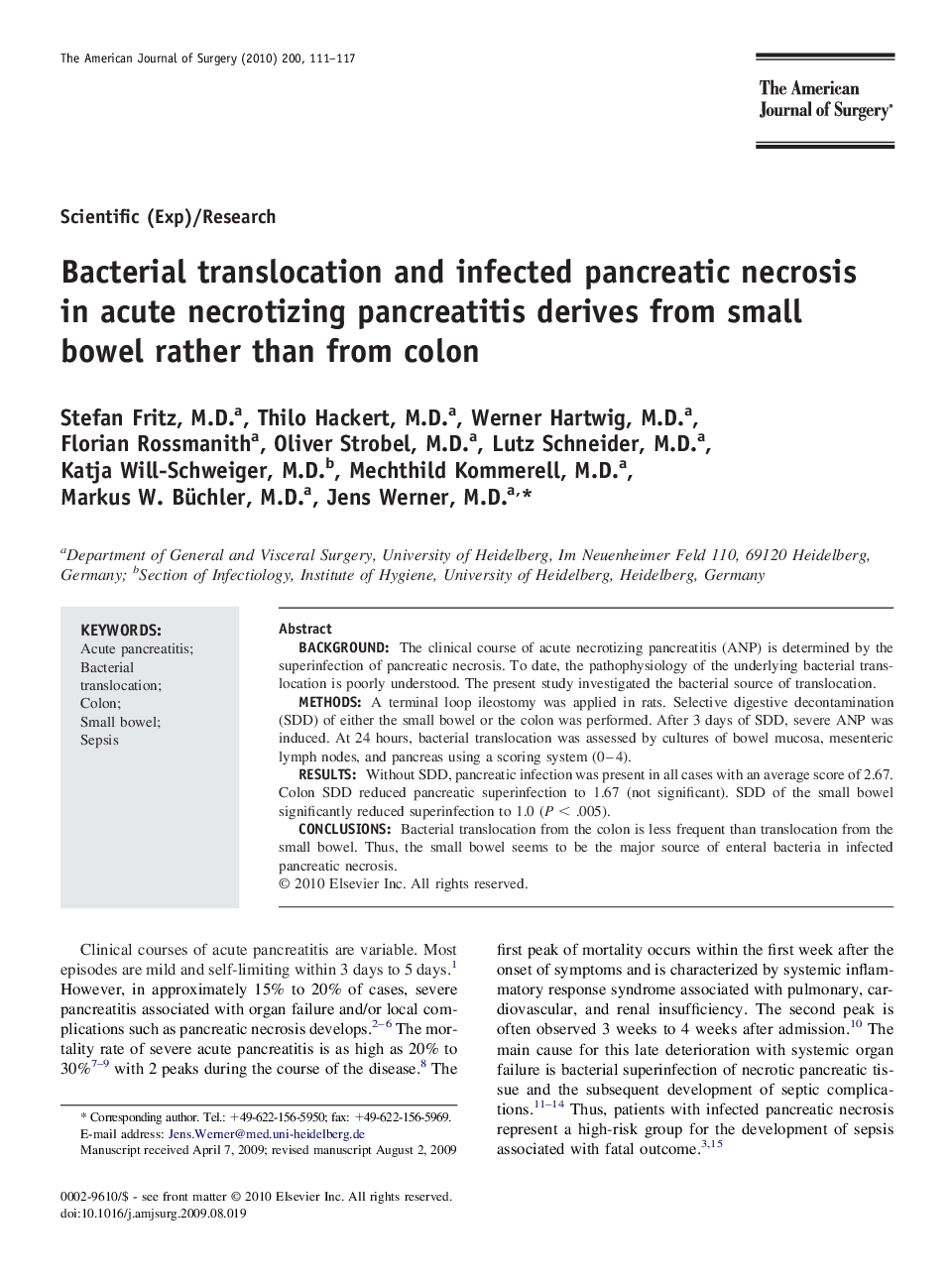| Article ID | Journal | Published Year | Pages | File Type |
|---|---|---|---|---|
| 4280368 | The American Journal of Surgery | 2010 | 7 Pages |
BackgroundThe clinical course of acute necrotizing pancreatitis (ANP) is determined by the superinfection of pancreatic necrosis. To date, the pathophysiology of the underlying bacterial translocation is poorly understood. The present study investigated the bacterial source of translocation.MethodsA terminal loop ileostomy was applied in rats. Selective digestive decontamination (SDD) of either the small bowel or the colon was performed. After 3 days of SDD, severe ANP was induced. At 24 hours, bacterial translocation was assessed by cultures of bowel mucosa, mesenteric lymph nodes, and pancreas using a scoring system (0–4).ResultsWithout SDD, pancreatic infection was present in all cases with an average score of 2.67. Colon SDD reduced pancreatic superinfection to 1.67 (not significant). SDD of the small bowel significantly reduced superinfection to 1.0 (P < .005).ConclusionsBacterial translocation from the colon is less frequent than translocation from the small bowel. Thus, the small bowel seems to be the major source of enteral bacteria in infected pancreatic necrosis.
